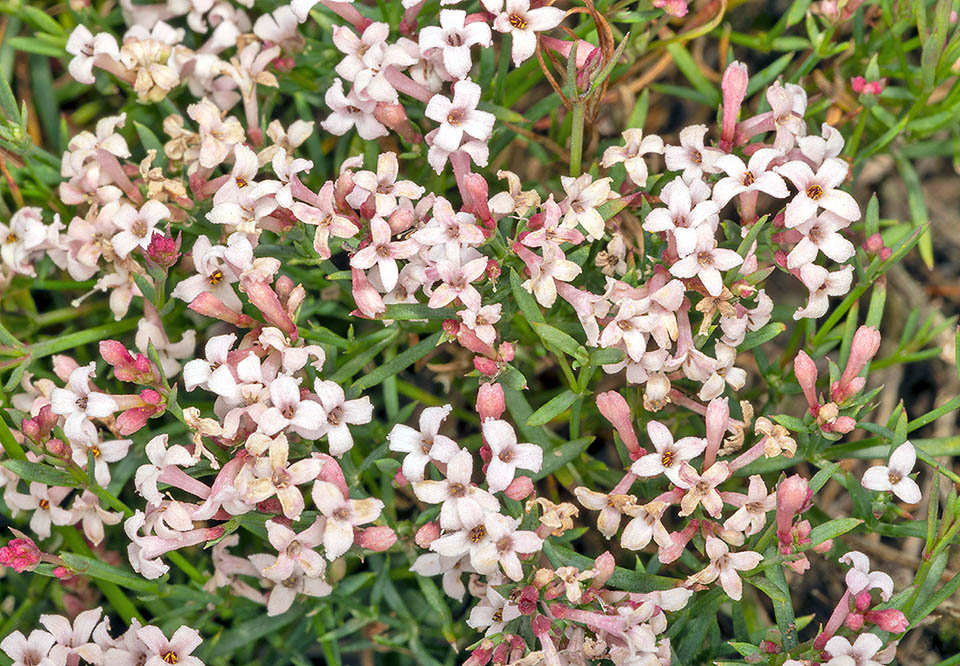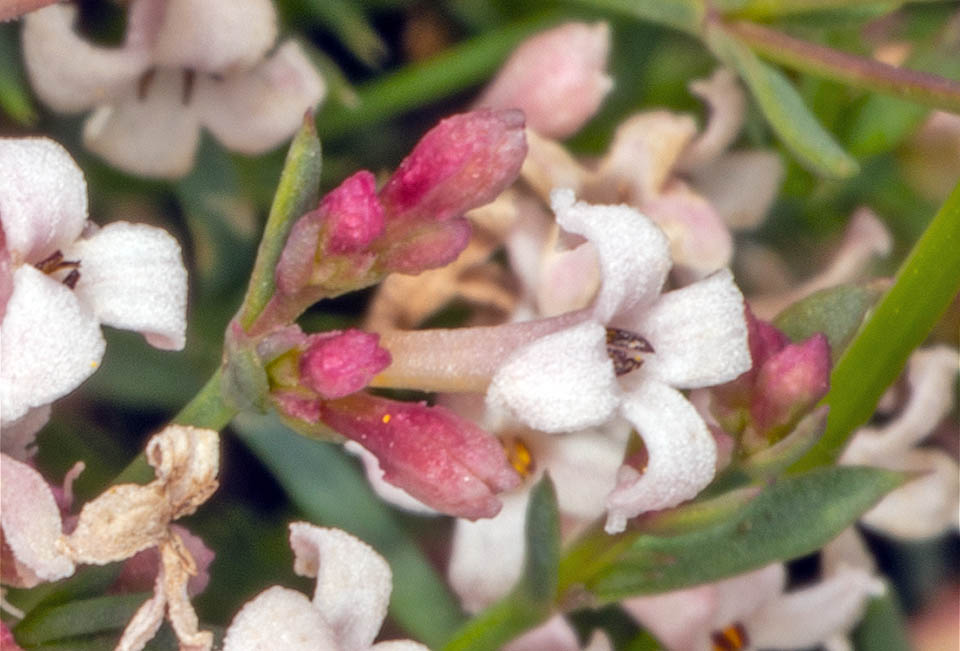Family : Rubiaceae

Text © Prof. Piero Medagli

English translation by Mario Beltramini
Cynanchica aristata (L. f.) P. Caputo & Del Guacchio, has a Mediterranean-mountainous range, which means that it is diffused on the Mediterranean coastal belt as well as in the mountain one. It grows in the dry and stony slopes and on the cliffs up to 2200 m above the sea level where it prefers the calcareous substrate.
For what the etymology is concerned, according to some hypotheses the name of the genus Cynanchica should come from the Greek “συνάγχη” (synanche), acute inflammatory infection of the throat with suffocation, also called cynanche and squinance in the most ancient medical texts, hence plant able to treat this disease. Conversely, after the most diffused opinion the term should be coming from “συν” (syn) and “ἄγχω” (àncho), to strangle, to suffocate, even contrary to what reported in some modern texts and sites that derive the name from “κύων, κυνός” (cyon, cynòs), dog, and with reference to the whooping cough “ἄγχω” (àncho).
The specific term aristata originates from arista, because of the pointed and filiform appendages of the leaf apexes that make solid and prickly pads, even 30-40 cm broad, at times present on the altitude screes.

Cynanchica aristata is a perennial herbaceous plant, with stems at times lignified at the base. Grows polymorphic along Mediterranean coasts up to above 2200 m altitude © Giuseppe Mazza
Here are some common names: stellina a tubo allungato (Italian); Grannen-Meier (German); Southern squinancywort (English); Asperilla de flor roja (Spanish); Aspérule aristée (French).
Cynanchica aristata (L. f.) P. Caputo & Del Gracchio is a very polymorphic plant, in fact in the literature, especially in relation to past data, it is difficult to extricate oneself in the complex and often convoluted synonyms relevant to the intraspecific variability, due to the presence of several subspecies often of controversial consistency.
It is perennial or entirely herbaceous or more or less lignified at the base, with erect or creeping stems, ramified, of green or greyish colour, almost glabrous or pubescent in the lower part, from 10 to 25 cm tall (rarely up to 40) and thin diameter not exceeding 1 mm.

Inflorescence detail. The leaves, usually glabrous or poorly hairy, end in a thin and sharp point that has given the name to the species © Giuseppe Mazza
The leaves are linear, thin, opposite or forming verticils of 4, adherent to the stem or erect, with one single vein, with at margin at times slightly folded, ending in a thin, sharp 0,1-0,2 mm tip usually glabrous or slightly hairy.
Flowers with short peduncles merged in very ramified inflorescence, formed by hermaphroditic flowers with a conical tube-shaped corolla of greenish, yellowish, or purple-yellowish colour with four short and protruding lobes, with pointed apex. There are four stamens inserted in the tube and two styles. Inferior ovary.
Bilocular fruit, that is formed by two carpels. Flowering takes place, depending on the altitudes, between May and July.
Synonyms: Asperula aristata (L.) f.
→ To appreciate the biodiversity within the RUBIACEAE family please click here.
